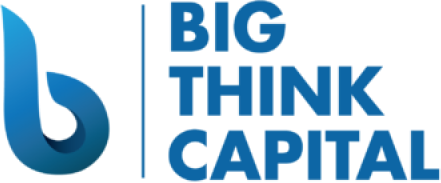Understanding the Impact of Federal Reserve’s Rate Decision on Small Business Financing Options
Estimated reading time: 5 minutes
- Informed Decisions: Understanding Federal Reserve decisions aids in making strategic financing choices.
- Evaluate Options: Assess the impact of interest rates on various financing avenues available to your business.
- Diversification: Consider a mix of financing options to mitigate risk and improve cash flow.
Table of Contents
- The Federal Reserve’s Role in Business Financing
- Effect of Interest Rate Changes on Working Capital Advances
- Navigating Equipment Financing in a Higher Rate Environment
- SBA Loans: The Impact of Federal Interest Rates
- Practical Insights for Small Business Owners
- The Road Ahead for Small Business Financing
The Federal Reserve’s Role in Business Financing
The Federal Reserve, often referred to as the Fed, plays a crucial role in regulating the U.S. economy. By adjusting interest rates, the Fed influences borrowing costs and liquidity in the financial system. When the Fed raises rates, borrowing costs tend to increase, which can deter businesses from taking on new debt. Conversely, lower interest rates encourage borrowing and spending.
In recent months, the Federal Reserve has indicated a strategic focus on controlling inflation rates, which has led to a series of interest rate hikes. This strategy can have varying effects on different types of financing options available to small businesses.
Effect of Interest Rate Changes on Working Capital Advances
Working capital advances, a popular financing option, provide businesses with quick access to cash based on future sales. As interest rates rise, the cost of borrowing through these advances can increase, impacting small business owners.
Key Effects of Higher Interest Rates on Working Capital Advances
- Increased costs: Higher interest rates mean that businesses may face steeper fees and charges when accessing working capital advances. This can strain cash flow, particularly for businesses that rely heavily on quick funding to manage day-to-day operations.
- Altered repayment structures: Some lenders may adjust their repayment terms in response to rising rates. This could lead to shorter repayment periods or higher daily payback percentages, potentially creating a burden for small businesses.
- Potential for stricter credit requirements: As lenders adjust to the new rate environment, they may tighten their credit requirements, making it harder for small businesses with less-than-perfect credit to qualify for these advances.
Navigating Equipment Financing in a Higher Rate Environment
Equipment financing is another critical funding avenue for small businesses, enabling them to acquire necessary machinery and technology. This financing typically involves loans or leases that are often tied to interest rates.
Considerations for Small Businesses in 2025
- Increased borrowing costs: As with working capital advances, equipment financing costs are likely to rise with increasing interest rates. This may lead business owners to reconsider whether to purchase or lease equipment.
- Longer decision-making processes: Decision-makers may become more deliberative as they assess the costs and benefits of financing options. This could delay upgrades or acquisitions, potentially impacting operations.
- Alternative options: Businesses may look for innovative funding solutions to offset increased borrowing costs. Some lenders are initiating flexible terms or incentivizing those in specific industries with favorable rates as a way to stimulate growth.
SBA Loans: The Impact of Federal Interest Rates
The Small Business Administration (SBA) loans offer crucial support for startups and established businesses seeking long-term financing options. These loans are often considered favorable due to lower interest rates and favorable terms, but they are not immune to the Fed’s rate decisions.
How Interest Rates Impact SBA Loans
- Variable interest rates: Many SBA loans have variable rates adjusted based on the prime lending rate, which is influenced by Federal interest rate policies. As rates rise, so too can the interest payments on these loans.
- Lengthy approval processes: The rigorous application process for SBA loans can deter some businesses, especially as costs rise. Business owners might reconsider whether to undergo the lengthy approvals or explore faster financing options.
- Potential increase in loan defaults: If businesses feel the strain of rising interest rates, the likelihood of defaults on existing loans might rise, leading to a more cautious lending environment.
Practical Insights for Small Business Owners
Understanding the current financial landscape is vital for making informed decisions regarding future financing. Here are three practical takeaways for business owners exploring funding options in light of recent Federal rate changes:
- Evaluate Financing Needs Carefully: Before committing to any financing, thoroughly assess your current needs. Consider how changes in interest rates might affect your cash flow projections and repayment capabilities.
- Diversify Your Financing Sources: Do not rely solely on one type of financing. While working capital advances and SBA loans are popular, equipment financing can be a valuable tool to enhance business productivity. Explore a mix of options to spread your risk.
- Stay Informed About Market Trends: Keep an eye on the Fed’s announcements and macroeconomic indicators. Understanding these trends will not only help in making short- and long-term financial decisions but will also position you to take advantage of transient opportunities.
The Road Ahead for Small Business Financing
As we move further into 2025, small business owners should remain vigilant regarding the implications of the Federal Reserve’s decisions. Whether seeking working capital advances, equipment financing, or SBA loans, understanding how interest rates affect these options is essential for maintaining a healthy financial outlook.
At Big Think Capital, we are committed to helping small businesses navigate a shifting funding landscape. Our team of funding experts is here to guide you through the various financing options available, ensuring you find the approach that best suits your business needs.
If you would like to learn more about your financing options or to speak with a funding expert, visit us at bigthinkcapital.com. We are here to support you in achieving your business goals and ensuring your venture thrives in any economic climate.
FAQ
- How does the Federal Reserve’s rate decision affect small businesses?
- What are working capital advances?
- How can small businesses mitigate the impact of rising interest rates?
How does the Federal Reserve’s rate decision affect small businesses?
The Federal Reserve influences borrowing costs through interest rate adjustments. Higher rates can lead to increased borrowing costs, which may deter small businesses from taking on new debt.
What are working capital advances?
Working capital advances are financing options that provide businesses with quick access to cash based on future sales. These are typically used to cover immediate operational expenses.
How can small businesses mitigate the impact of rising interest rates?
Small businesses can mitigate the impact of rising rates by diversifying financing options, staying informed about market trends, and evaluating their financing needs carefully before making decisions.






